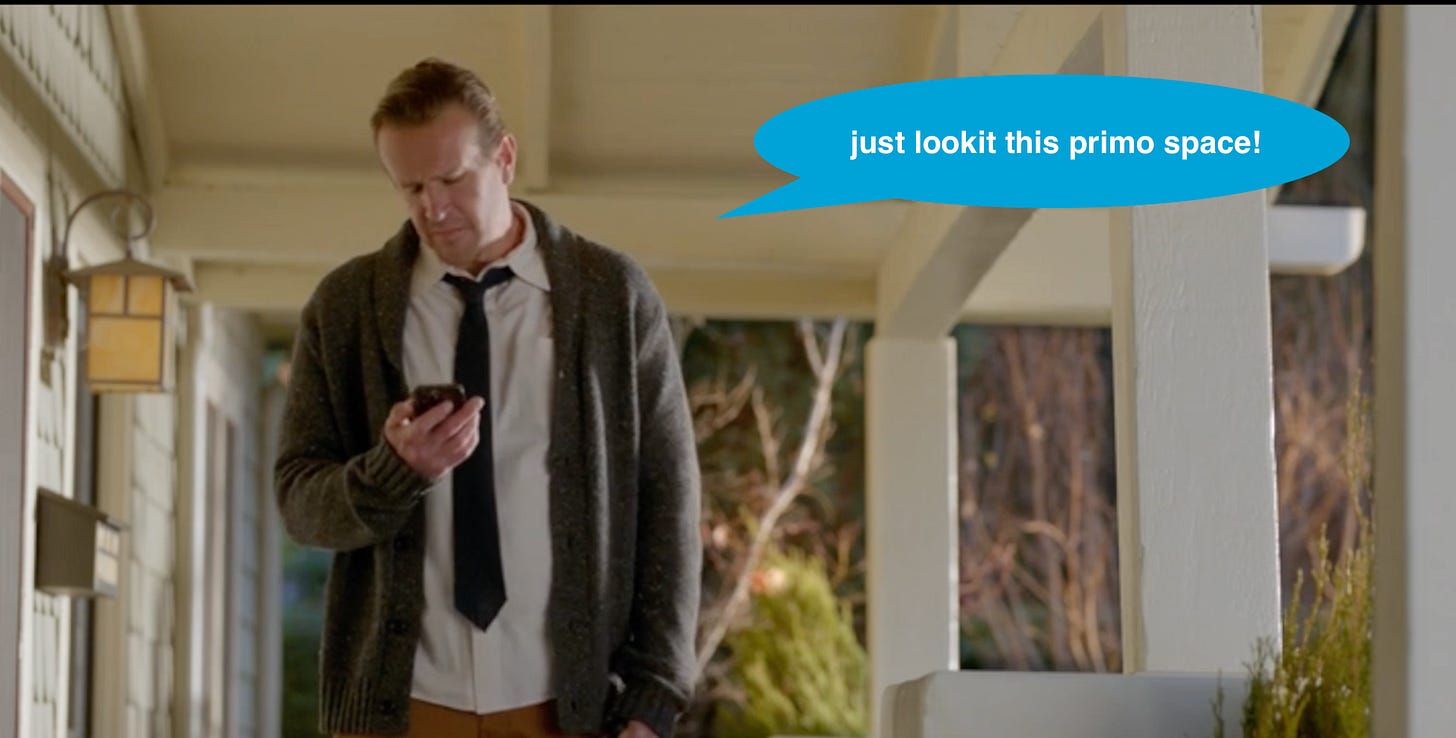Week 101 posts include shots from Doctor Who (2005-2021); Can’t Hardly Wait (1998); Clockers (1996); Shrinking (2023-current), and One Hundred and One Dalmatians (1961) because how could we not?
Shrinking
There may be a hundred ways to show a text message on screen - and some of the shot framing, particularly of Jimmy (Jason Segel) suggests this episode of Shrinking was going to have text pop-ups.
But if you can make the jokes and information flow without pop-ups — as this scene does — eliminating on-screen text means less 'work' for the viewer, and you can cut to some of those comic looks from the actors: bing-bang-boom!
Comedy can dictates rhythm, instead of pacing the scene around reading text.
Clockers
The camera movement in this scene makes us feel Strike’s (Mekhi Phifer) nervousness.
The camera doesn’t anticipate his movements and it's also not *quite* in time - the point is Strike is moving erratically, so the camera has to feel as thought it's trying to ‘keep up’.
We talk about four other Clockers shots here.
Can’t Hardly Wait
If you're looking for something ridiculous to underscore the melodrama of your pining teenage protagonist, what's better than transitioning from a flashback with a tumbling, one-corner-perfectly-bitten-off pop tart?
Doctor Who
These shots from 4.07 "The Doctors Daughter" shows where the Doctor (David Tennant) literally is between Jenny and Donna through framing, focus, and colour blocks.
The Doctor is in a full half of each shot, in the background out of focus. Foregrounded and in focus in their respective two-shots are Jenny and Donna: Jenny on the left, against orange while the Doctor is framed against green; Donna on the right against green while the Doctor is framed against orange.
The use of colors and keeping Jenny and Donna on opposite sides of frame helps ensure we're never confused when it cuts from one to the other.
But the visuals keeping Jenny and Donna so distinctly blocked and framed also demonstrates how the Doctor is attempting to compartmentalise his 'personal-life and companion-life' and thus keep his personal-offspring and temporary-life-companion separate.
One Hundred and One Dalmatians
The principles in this One Hundred and One Dalmatians scene — specifically colour-as-contrast, camera movement, and editing — are all applicable to live action as well!
1. Contrasting a show-with-a-show is always important so the audience is never confused; in this case the black-and-white TV keeps "Thunderbolt" distinct from the Dalmatians.
2. The camera pans, dollies, and follows one character looking at another.
3. After a cut, there's motion (whether it's a big tumble or a tail wagging) and/or dialogue immediately.
The combination of camera moves and in-shot action propels the scene and also makes us feel how constantly 'happening' life with fifteen puppies would be!





